44
Swati Pujari, Erasmus University Rotterdam, The Netherlands
The Ancient Monument Preservation Act of 2013 B.S. [1] (A.D. 1956) considers objects with value and/or more than hundred years old as ‘monuments’. Values can be various. The temples of Kathmandu Valley embody, besides obvious religious values, historic, communal and architectural significances. Most temples were built several centuries ago, during the rule of Malla Kings (12th to 18th century A.D.). Architecturally they reflect the pinnacle of the valley’s temple designs, the Tiered and the Shikhara styles. They are largely of brick and timber, however, use of stone is also found. Age old architectural marvels, these temples still remain an integral part of peoples’ lives.
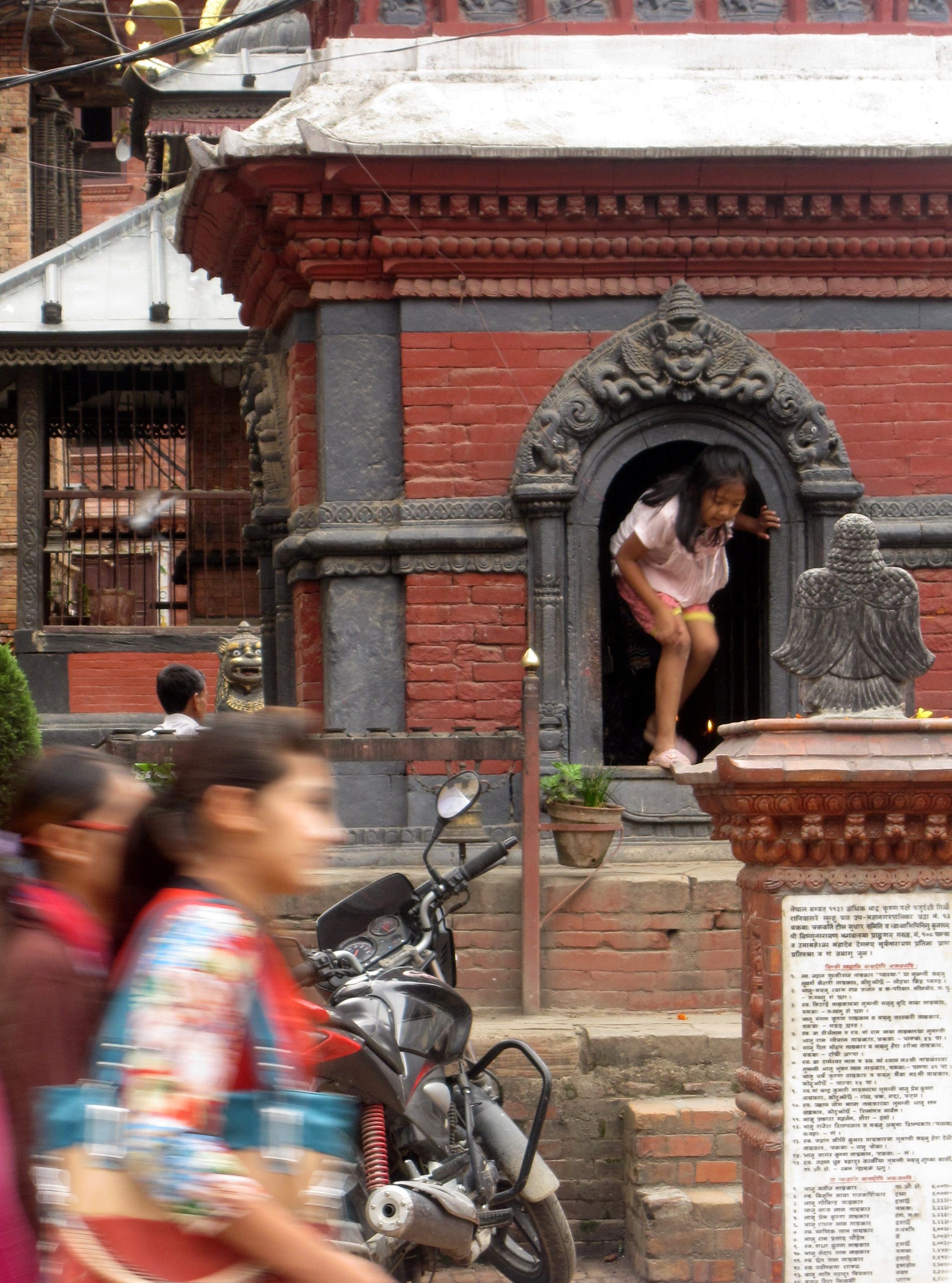
Shrines are found either in clusters, around the famous Durbar Squares and other significant complexes, or, independently at street junctions and courtyards, potentially, but not necessarily, close together. It is common to see locals visiting these shrines in the mornings, with more visitors during festivals and other religiously significant days. But even at an odd hour of an odd day, people pray, and motorbikes stop to bow, to these deities. A prayer at a shrine, on one’s way to work or school, is as much of a part of local Kathmandu life as a cup of chiya (milk-tea) at a random hour.
These temples, significant in historic and socio-cultural perspectives, have multiple stakeholders with specific responsibilities. Newars, the indigenous community of Kathmandu valley, have a collective or communal system called ‘Guthi’ [2] that regulates their ritual lives. However, guthis have other roles also. Every temple/deity has several guthis as custodians of their religious and cultural activities and traditions. Most such guthis are mono-caste, and have specific responsibilities, like a temple priests’ guthi is responsible for ritual worships. When every guhti complies with its responsibilities, maintenance and rituals of the temple and the deity run smoothly.
In 2021 B.S. (1964 A.D.) a central government cooperation called Guthi Sansthan was established to manage and coordinate public guthis responsible for temples and festivals. Historically, guthi activities were funded by harvests from communal lands, however after their centralization in Guthi Sansthan, the basic ritual funds are provided by the government. The maintenance and renovation of temples, as heritage monuments, is officially overseen by the Department of Archaeology. Ergo, the formal responsibilities for temples are vested, collectively, in the Department of Archaeology, Guthi Sansthan and responsible communal public guthis. This however doesn’t stop communities from claiming stewardship of monuments in their localities.
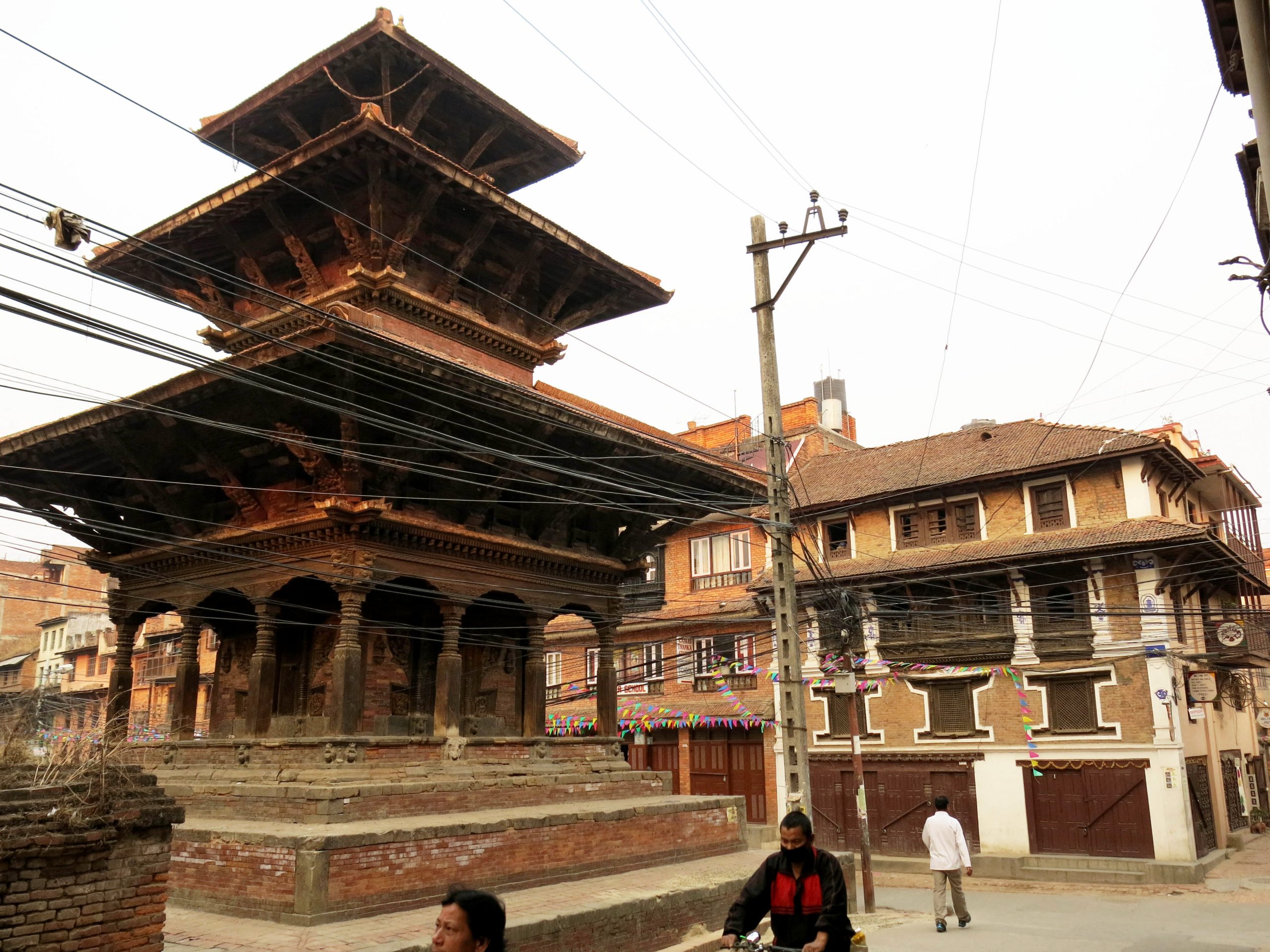
On 25 April 2015, a 7.8 magnitude earthquake shook central Nepal, the quake and the aftershocks, claimed more than 8,000 lives and injured more than 20,000. Many historic monuments either completely collapsed or were severely damaged. Numerous national monuments, including several listed as UNESCO World Heritage, were destroyed. Many of those left standing were also damaged. The primary concern was to rescue people possibly buried underneath. This task was carried out by national and international rescue teams, with active involvement of local communities, as informers and/or volunteers. The second largest national tragedy since is the extensive loss of cultural heritage. The last massive earthquake here was in 1990 B.S. (1934 A.D.) causing a colossal loss of life and monuments, what the county now faces is easily the biggest heritage crisis since then.
Responding to this, the Department of Archaeology, UNESCO, and Kathmandu Valley Preservation Trust etc. are taking necessary steps to ensure documentation and safety of cultural heritage. However, with this magnitude, organizational efforts alone may not be timely enough! In such a scenario, neighbourhood monuments are finding protection in the local communities.
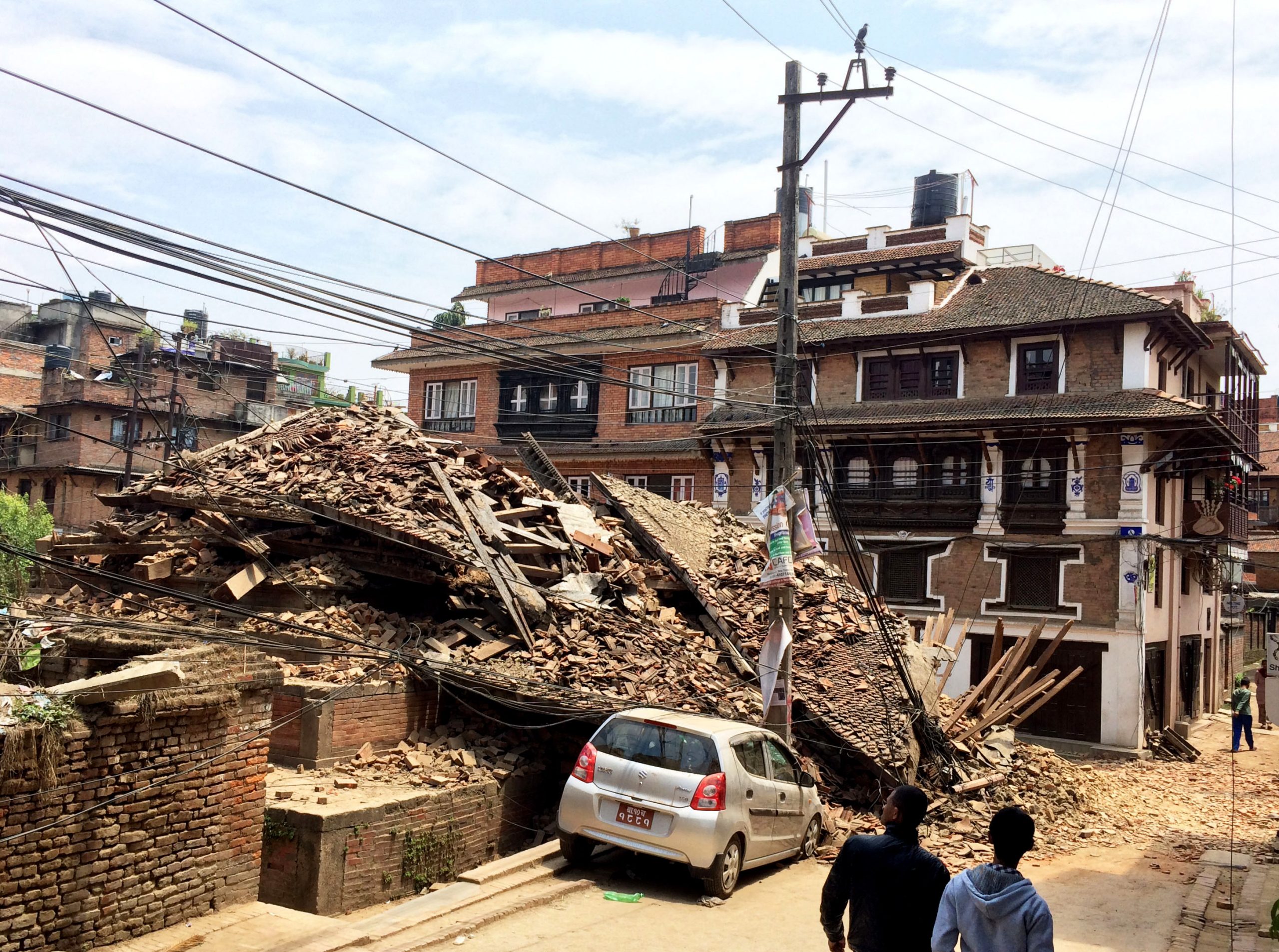
When the Radha-Krishna temple, a three-tiered, four-hundred years old, brick and timber temple, at Swotha, Lalitpur, crumbled down, the locals immediately rescued the people underneath, and then aided security personnel digging through the remains. Swotha is a popular tourist destination, with a mixture of original inhabitants as well as long and short term visitors staying at its several tourist accommodations. The days following the earthquake, one could see people from Swotha and anonymous volunteers working with army personnel, picking the pieces of the temple. Bricks were stacked, so were the clay tiles, timber elements were piled nearby while carved pieces were carefully moved to a locked community space.
Jiten Shrestha, a local inhabitant and business owner, indicates that people in Swotha feel connected to the monuments as well as the place. However, he recalls the trend of local people moving out from this area. Located in the historic part of Lalitpur, many buildings were converted into tourist accommodations, Swotha was getting gentrified. But, the owners and inhabitants of these accommodations started investing in the locality, and the locals joined in. Simple efforts such as cleaning, lighting the area, having a gathering, created a bond between both the old and the new inhabitants, as well as with the place.
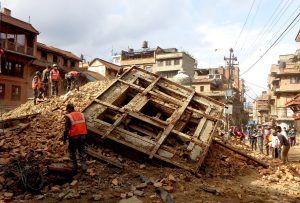
It is perhaps this connection that prompted people to, consciously and pro-actively, help manage the pieces of the fallen temple. Aiding this was the informal instruction by Rohit Ranjitkar, of Kathmandu Valley Preservation Trust, to safeguard the pieces. It is interesting to see that all involvement, other than that of the army, was informal. A local women’s group was even providing basic first-aid as well as chiya (tea) the whole time.
The people in Swotha are confident that the Radha-Krishna temple will be rebuilt. But since it doesn’t have the same level of religious significance as some nearby pilgrimages, they don’t expect devotees from all over, looking for religious merit, will donate to rebuild the temple. Yet, this temple is a significant local heritage and connected to local sentiment. The Department of Archaeology and other organizations are currently overwhelmed. But in Swotha, the community has salvaged and safeguarded the remains, the bricks may need checking for strength and the timber for decay, new materials will also be needed, and they may have to wait a long time for the actual reconstruction. Yet, they know that the ones who have been involved up till now, will not back off!
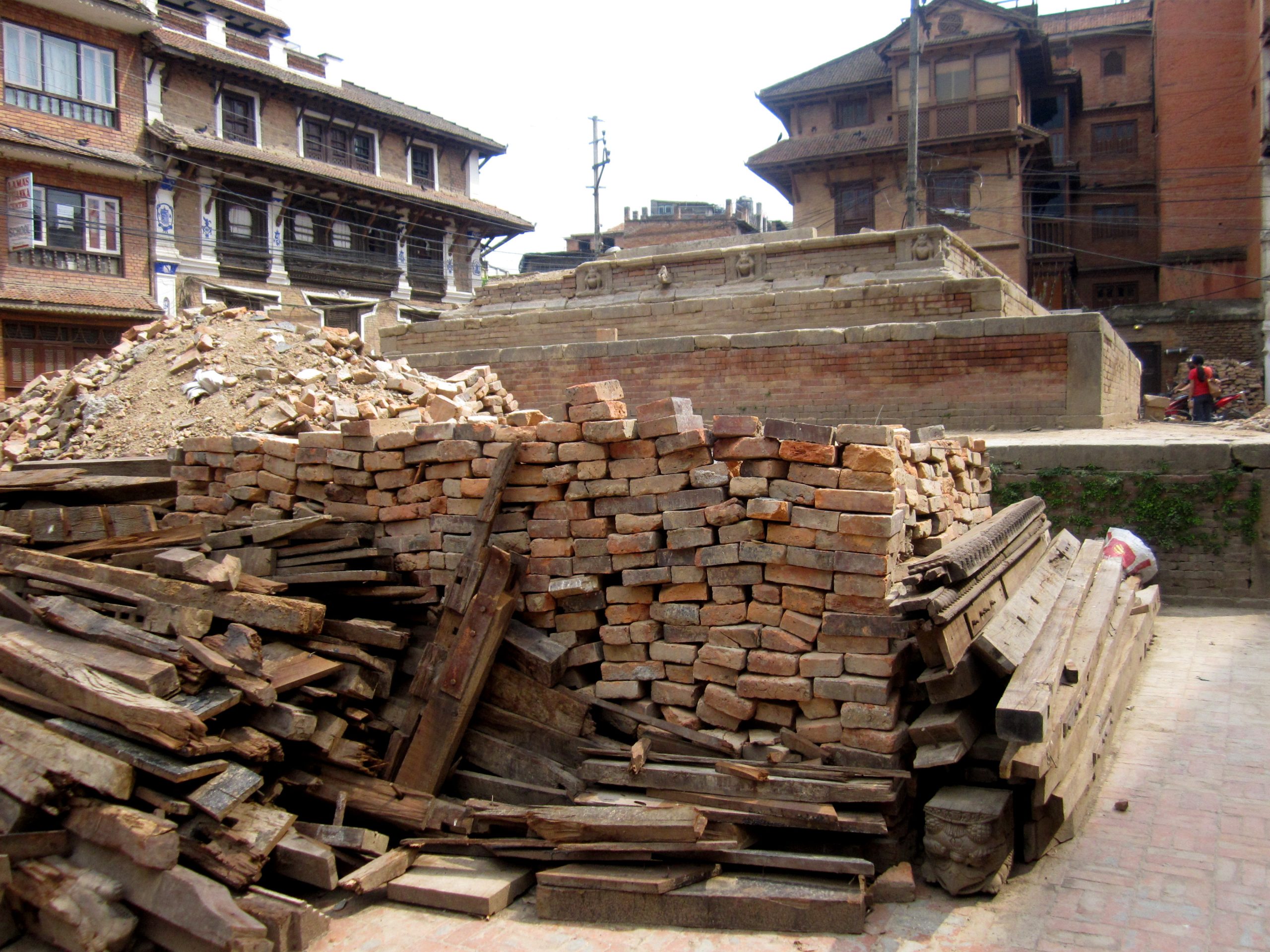
Authors Notes
[1] Bikram Sambat (B.S.) is the official lunar calendar in Nepal. The current year in B.S. is 2072.
[2] Guthis are traditional religion based organizations. In the 1975 article ‘Jãko: A Newar Family Ceremony’, Gérard Toffin explains Guthis as a system that organizes festivals, feasts, funerals, worshiping and other religious functions, and as such guides the socio-religious lives of the local inhabitants of Kathmandu Valley.
Author Biography
 The author is an architect and urban manger from Nepal and an alumna of Institute for Housing and Urban Development Studies (IHS), Erasmus University Rotterdam. During her M.Sc. in Urban Management and Development, she specialized in Integrated Planning and Urban Strategies focusing on the theories of Self-Organization and Place-Making. Currently she is managing a network in Nepal called Nepal Rebuilds (www.nepalrebuilds.org), which she also initiated. The primary aim of this network is to discuss, facilitate and promote processes of equitable development and rebuilding in the post-earthquake scenario of Nepal. She is also a writer/blogger.
The author is an architect and urban manger from Nepal and an alumna of Institute for Housing and Urban Development Studies (IHS), Erasmus University Rotterdam. During her M.Sc. in Urban Management and Development, she specialized in Integrated Planning and Urban Strategies focusing on the theories of Self-Organization and Place-Making. Currently she is managing a network in Nepal called Nepal Rebuilds (www.nepalrebuilds.org), which she also initiated. The primary aim of this network is to discuss, facilitate and promote processes of equitable development and rebuilding in the post-earthquake scenario of Nepal. She is also a writer/blogger.
Contact Details:
Email: swati.pujari1@gmail.com
Twitter: @PujariSwati
Blog: www.lifeasanurbanite.blogspot.com
